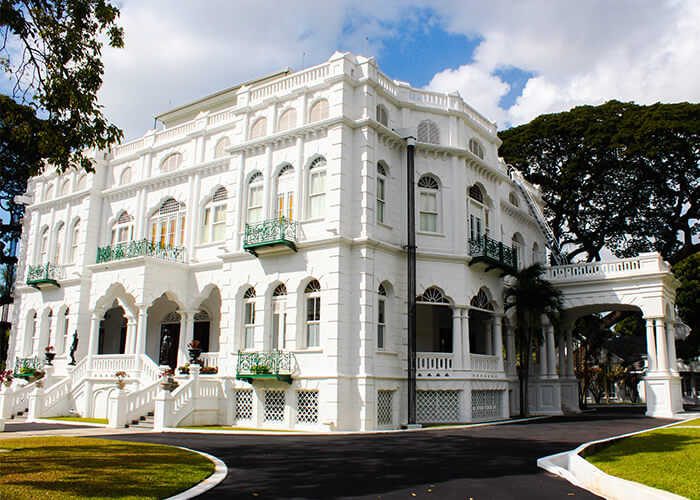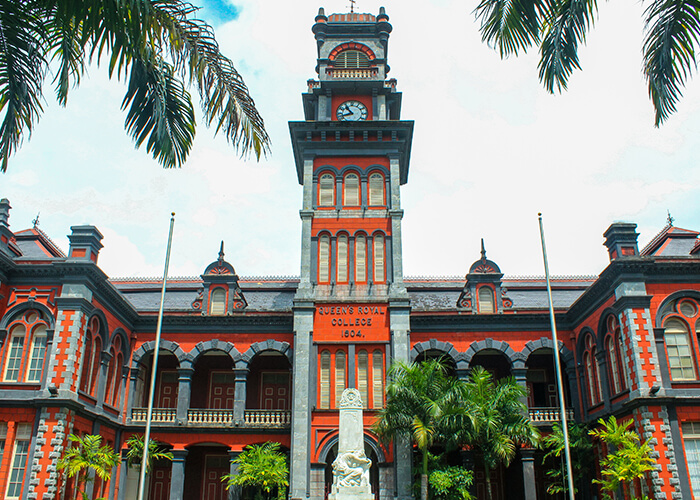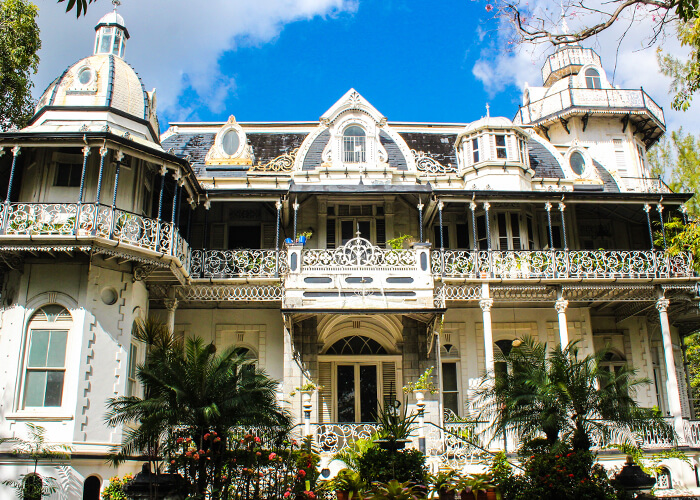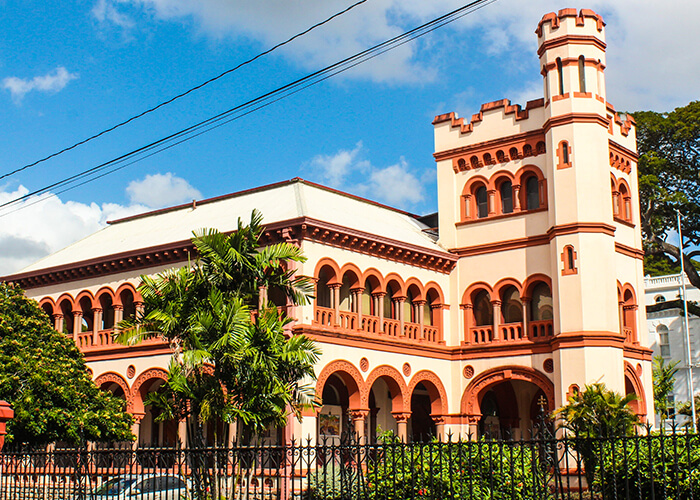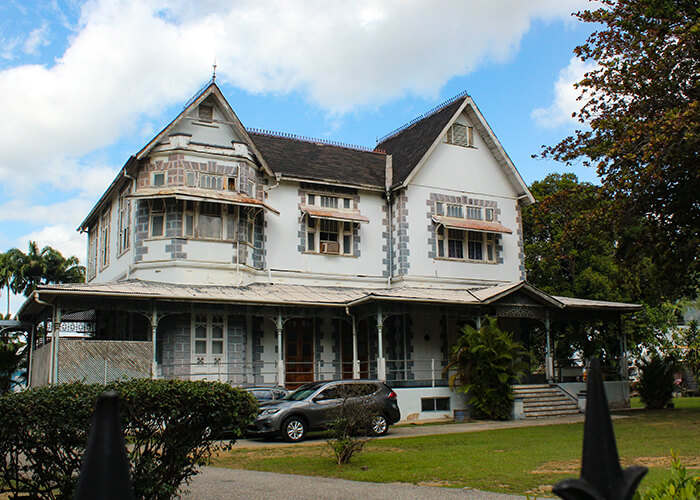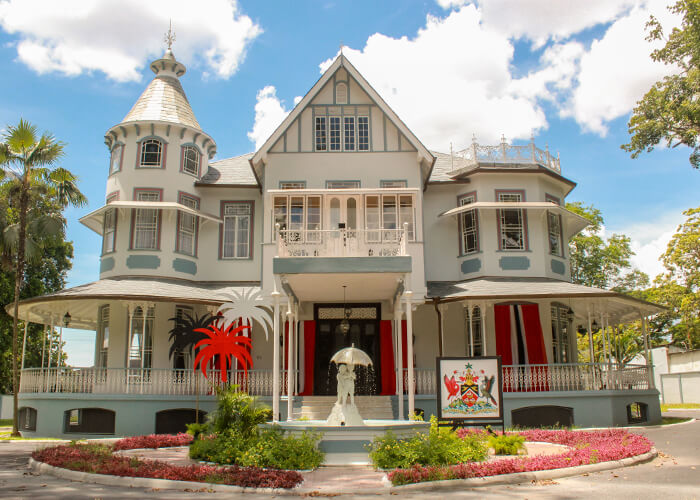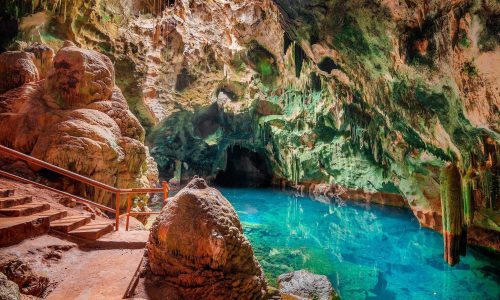Take a stroll around the Queen’s Park Savannah in Port of Spain, Trinidad, to find a string of historical mansions known as the Magnificent Seven. The Magnificent Seven includes Ambard’s House / Roomor, Archbishop’s Palace, Hayes Court, Killarney (Stollmeyer’s Castle), Mille Fleurs, Queen’s Royal College and Whitehall (Rosenweg). Read on to learn more about their unique architecture and history.
KILLARNEY (STOLLMEYER’S CASTLE)
The magical and elaborate Stollmeyer’s Castle, also called “Killarney”, is one of seven striking mansions that make up the Magnificant Seven located around the Queen’s Park Savannah in Port of Spain and is actually the first of them to be constructed. It was built for entrepreneur Charles Stollmeyer in 1904 by Scotsman Robert Gillies who found inspiration in the Balmoral Castle of Scotland.
WHITEHALL (ROSENWEG)
White Hall, named after the beautiful coral stone with which it was made, was the largest of the six private residences of the Magnificent Seven mansions in Port of Spain. Construction of this majestic structure began in 1904, featuring a Palladian style with origins in classic Greek, Roman and Moorish architecture. Interestingly, the White Hall served as the Headquarters for the US Military during World War II until 1944. It also served as the Office of the Prime Minister of Trinidad and Tobago from 1959 to 1988 and from 1999 to 2008. It was officially reopened in August 2019.
QUEEN’S ROYAL COLLEGE
The brilliant red facade and German Renaissance architectural features of the Queen’s Royal College truly make this structure one of the most striking of the Magnificent Seven mansions, situated around the Queen’s Park Savannah in Port of Spain. The building was officially opened in 1904 and boasts of a 93-feet tall clock tower which houses a gifted King Edward VII Memorial Clock and incorporates tropical architectural adaptations such as open corridors and galleries to facilitate ventilation in the Caribbean climate.
AMBARD’S HOUSE / ROOMOR
Roomor, or Ambard’s House, was constructed by Lucien F Ambard in 1904 as a family residence. It was designed by a French architect and is described as being French 2nd Empire in style. Because of financial difficulties resulting in an inability to meet his mortgage payments to Gordon Grant and Company, Ambard lost his house in 1919. It was subsequently sold to Pointz Mackenzie, who also lost it in 1923 under similar circumstances. The property again came under the control of the Gordon Grant and Company. In 1925, William Pettigrew Humphrey, an American businessman, rented the house where he lived with his family until 1940, the year that the house was sold to Mr Timothy Roodal.
Today, Ambard’s House remains the property and residence of Mr Roodal’s heirs and the house is at present occupied by Mr Roodal’s granddaughter, Dr Yvonne Morgan, and her family. Roomor is a combination of two family names; Roodal and Morgan.
Despite many changes, Roomor remains one of the few of the Magnificent Seven that has substantially maintained the integrity of the original design and finishes.
ARCHBISHOP’S PALACE
Built in 1903 and influenced by Indian Empire architecture with a touch of medieval style, the Archbishop’s Palace stands out among the Magnificent Seven mansions around the Queen’s Park Savannah for its truly distinctive architecture which also incorporates elements of its designer’s Irish heritage such as red granite and marble brought over from the Emerald Isle.
HAYES COURT
Built as the residence of Trinidad and Tobago’s Anglican bishops, this simple and elegant French Colonial–style building features intricate stonework, a wraparound veranda and contemporary Scottish cast-iron architectural elements. It forms part of the Magnificent Seven mansions situated in Port of Spain around the Queen’s Park Savannah.
MILLE FLEURS
Mille Fleurs is one of seven magnificent mansions located around the Queen’s Park Savannah in Port of Spain, featuring a balanced and symmetrical architectural style best described as French Provincial. This charming mansion was built in 1904 under the direction of renown architect George Brown of the Trinidad Trading Company and as a gift to Dr Enrique Prada, who would serve as the Mayor of Port of Spain from 1914 to 1917.
DISCOVER MORE SITES & ATTRACTIONS IN TRINIDAD
Click here to discover more unique sites & attractions in Trinidad.


